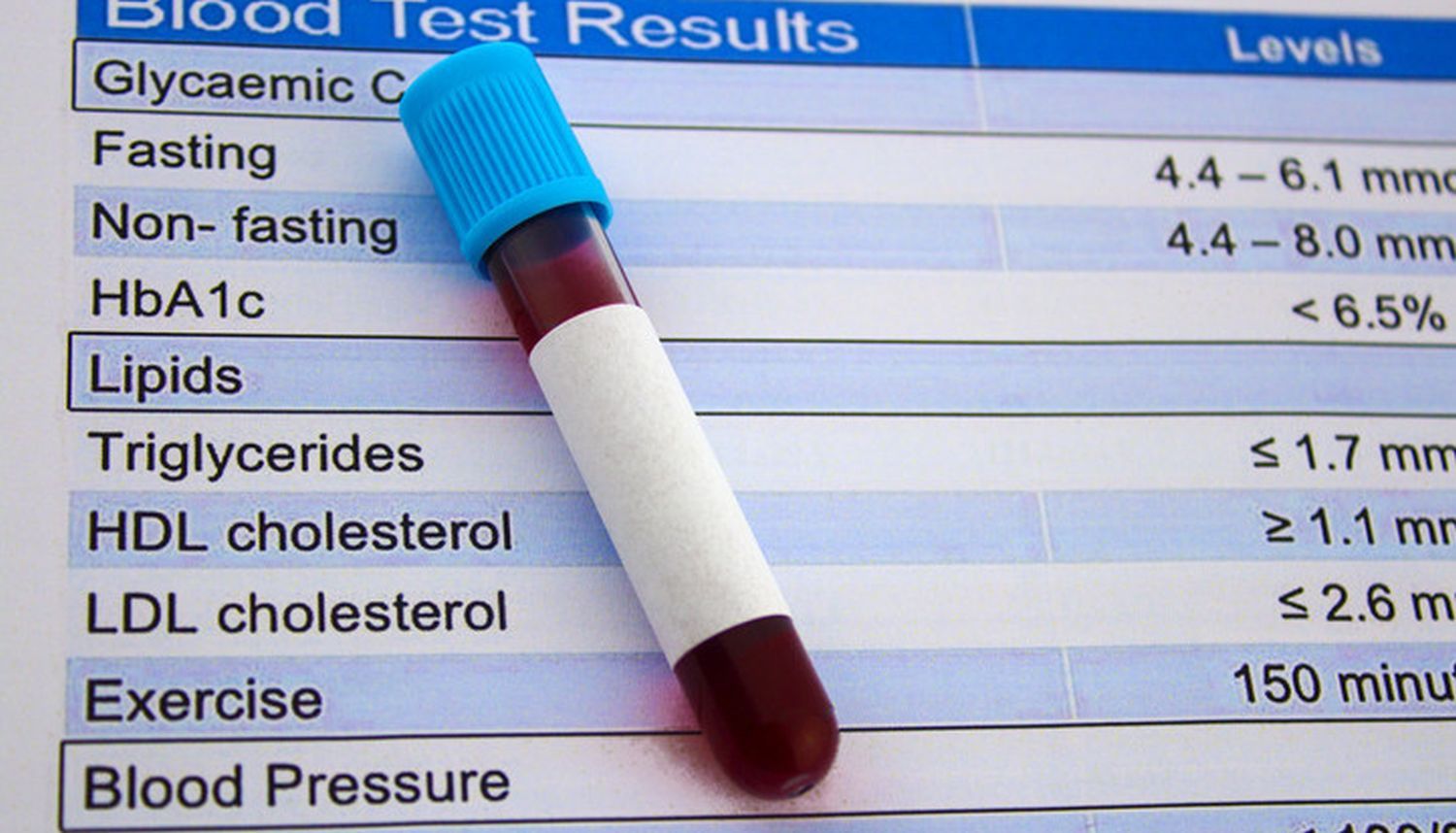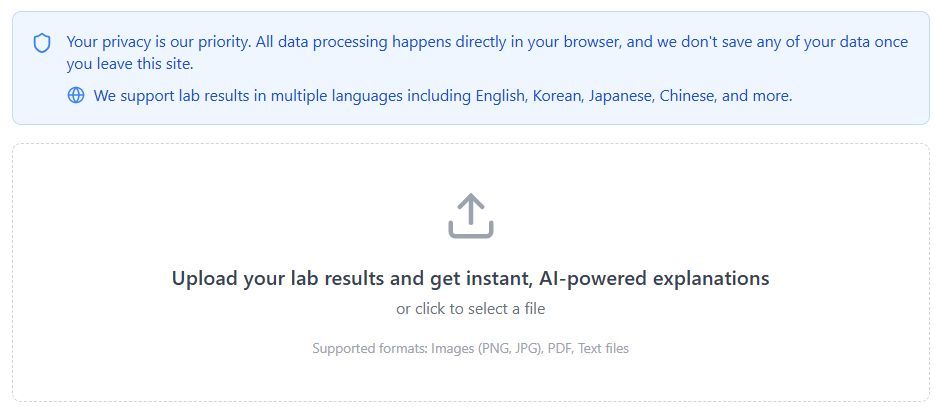HDL vs LDL Cholesterol: Understanding the Differences

HDL vs LDL Cholesterol: Understanding the Differences
Your body needs cholesterol for cell structure, hormone production, and energy use. Your cholesterol test shows two main types: HDL (High-Density Lipoprotein) and LDL (Low-Density Lipoprotein).
Medical professionals label HDL as "good" and LDL as "bad." This guide explains HDL and LDL cholesterol, their body functions, and ways to reach healthy levels. If you need personalized analyisis of your recent test results, LabAnalyzer can offer a specific breakdown of your particular numbers.
What is Cholesterol?
Cholesterol, a waxy, fat-like substance, exists in all body cells. It performs these functions:
Building Cell Membranes: Makes cells strong and stable
Making Hormones: Creates estrogen, testosterone, and cortisol
Creating Vitamin D: Produces Vitamin D during sun exposure
Breaking Down Fats: Forms bile acids for fat digestion
Your blood carries cholesterol in lipoproteins: HDL, LDL, and very low-density lipoprotein (VLDL). Each type affects your health differently.
HDL Cholesterol: The "Good" Cholesterol
Medical teams call HDL "good" cholesterol for its heart and artery protection.
HDL Functions:
Takes extra cholesterol from blood vessels back to your liver
Stops plaque from forming in arteries
Reduces atherosclerosis and heart disease risks
Fights inflammation in blood vessels
Creates larger, more protective particles through exercise
Target HDL Numbers:
Men: 40 mg/dL or higher
Women: 50 mg/dL or higher
Heart Protection Level: 60 mg/dL or higher
What Changes HDL:
Exercise raises HDL within 48-72 hours
Healthy food choices boost HDL gradually
Normal weight maintains good HDL
Smoking reduces HDL significantly
One alcoholic drink daily raises HDL slightly
Low HDL Risks:
Low HDL leads to more heart disease and strokes. Your body removes less harmful cholesterol with low HDL levels.
LDL Cholesterol: The "Bad" Cholesterol
Medical professionals label LDL as "bad" cholesterol. High LDL creates artery blockages.
LDL Functions:
Takes cholesterol to body tissues
Builds up in artery walls if levels stay high
Forms small or large particles (small ones cause more damage)
Triggers inflammation in blood vessels
Starts plaque formation in arteries
Target LDL Numbers:
Best: Under 100 mg/dL
Good: 100–129 mg/dL
High-Normal: 130–159 mg/dL
High: 160–189 mg/dL
Very High: 190 mg/dL or higher
What Raises LDL:
Foods high in saturated fats
Limited physical activity
Extra body weight
Genetic factors
Medical conditions like diabetes
Some blood pressure medications
High LDL Risks:
High LDL blocks arteries, leading to heart attacks and strokes. Plaque buildup starts early and worsens over time.
HDL vs LDL: Key Differences
Main Function:
HDL removes cholesterol from your blood. LDL delivers cholesterol to your cells.
Health Impact:
HDL guards against heart disease. LDL raises your heart disease risk.
Target Levels:
HDL works better at higher numbers (60 mg/dL or more). LDL works better at lower numbers (under 100 mg/dL).
Health Risks:
Low HDL raises your heart disease risk. High LDL blocks your arteries and leads to cardiovascular problems.
Triglycerides: The Third Lipid Player
Triglycerides store energy in fat cells. High triglycerides often occur with low HDL and high LDL.
Normal Ranges:
Normal: Under 150 mg/dL
High-Normal: 150–199 mg/dL
High: 200–499 mg/dL
Very High: 500 mg/dL or higher
What Raises Triglycerides:
Sugar and refined carbohydrates
Extra body weight
Limited exercise
Alcohol consumption
Uncontrolled diabetes
Some medications
How to Improve HDL and Lower LDL
Eat Heart-Protecting Foods:
Good Fats:
Olive oil: 2-3 tablespoons daily
Avocados: 1/4 to 1/2 daily
Nuts: 1.5 ounces daily
Fatty fish: 2-3 servings weekly
Reduce These Fats:
Red meat: Limit to 3 ounces
Full-fat dairy: Choose low-fat options
Processed foods: Check labels
Fried foods: Cook differently
Add Fiber:
Oats: 3/4 cup daily
Beans: 1/2 cup daily
Fruits: 2-3 servings daily
Vegetables: 4-5 servings daily
Exercise Program:
Cardio Exercise:
150 minutes moderate activity weekly
75 minutes vigorous activity weekly
10-minute minimum sessions
Track daily steps
Strength Training:
Two sessions weekly
8-10 exercises per session
Focus on major muscle groups
Rest one day between sessions
Stop Smoking:
Talk to doctor about quitting
Use nicotine replacement
Join support groups
Check cholesterol monthly
Control Weight:
Calculate healthy BMI range
Measure waist size
Track food intake
Weigh weekly
Set realistic goals
Monitor Alcohol:
Women: One drink daily maximum
Men: Two drinks daily maximum
Measure serving sizes:
Beer: 12 ounces
Wine: 5 ounces
Liquor: 1.5 ounces
Medical Treatment:
Your doctor will prescribe if needed:
Statins:
Lower LDL 20-60%
Raise HDL slightly
Need liver testing
Watch for muscle pain
Other Medications:
Niacin raises HDL
Fibrates lower triglycerides
PCSK9 inhibitors for genetic high cholesterol
Ezetimibe blocks cholesterol absorption
When to Get Tested
Regular Testing:
Age 20+: Every 4-6 years
High Risk: More frequent tests
Family History: Earlier testing
Heart Disease: Regular monitoring
Test More Often With:
Diabetes
High blood pressure
Smoking history
Extra body weight
Heart disease signs
Key Takeaway
Your HDL and LDL cholesterol levels show your heart disease risk. HDL protects your arteries by removing excess cholesterol. LDL can block arteries and cause heart problems. Regular exercise, healthy eating, proper weight, and sometimes medication keep your cholesterol numbers on target. Get regular tests and follow your medical team's advice.
